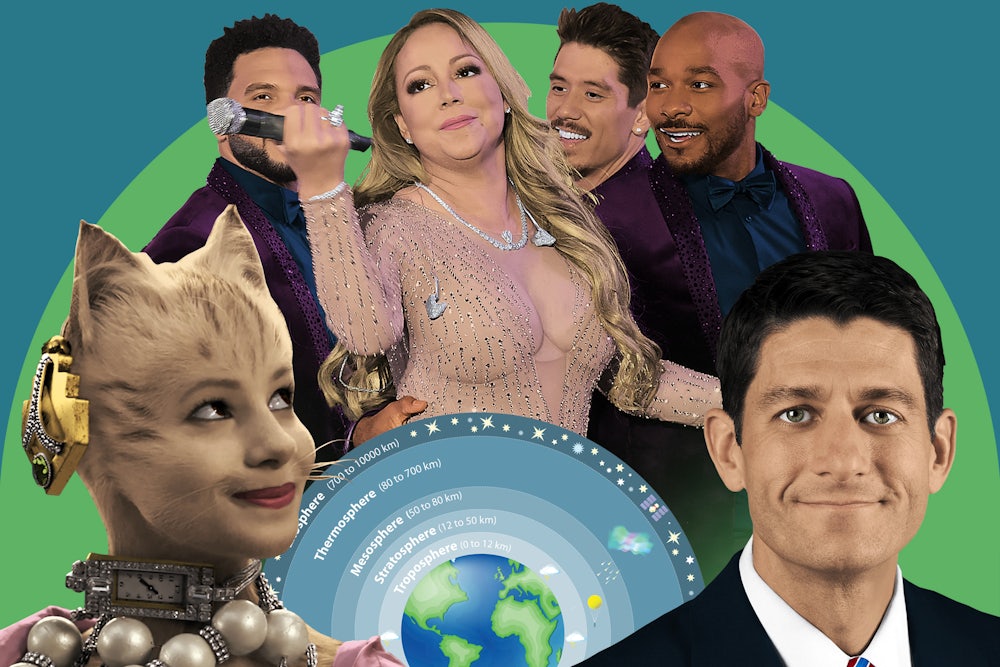Wikipedia is now such a ubiquitous part of online life that it’s hard to remember how strange the project seemed at first. I was a freshman in college in 2000, when Jimmy Wales and Larry Sanger launched the crowdsourced research site that would later become Wikipedia. My first exposure to it was as a resource that was always mentioned with a warning: It was not acceptable to cite Wikipedia in a paper, T.A. after T.A. sternly made clear.
The concern was, of course, that an encyclopedia anyone could edit would naturally contain any number of errors or pranks, which Wikipedia calls “vandalism”: A physics page was once changed to read, “The first law of thermodynamics is: You do NOT talk about thermodynamics”; Mariah Carey was briefly listed as deceased after she botched a New Year’s Eve performance; and for a time, the page listing species of animals with no backbone included an entry on Paul Ryan. In the context of today’s internet—where the real scams are cleverly disguised, not embedded in a system that is transparent about being constantly edited and revised by anyone who wants to volunteer—these “fake news” items seem almost quaint.
Wikipedia is no longer a fringy website run by a small group of ragtag volunteers and overseen by a “Benevolent Dictator,” as the early Wikipedians fondly called Wales. Over the past 20 years, it has become the de facto first stop for anyone looking for a curated set of secondary sources. But it has also managed to remain fun and strange—a reminder of a time when the internet was quirkier, before its captains were regularly hauled before Congress, and users took to calling social media platforms “this hellsite” and meaning it.
How has it remained such a bastion of the Good Internet? It may be because Wikipedia fosters consensus, on even the most contentious of topics. Pages that are ideological lightning rods, like the entry on September 11, are often locked from anonymous edits, but for the most part, even controversial pages merely summarize disagreements, rather than wading into them.
The New York Times once described the editing process as a “virtual barn-raising,” with volunteer editors working together to polish and build on Wikipedia’s 40 million entries. Today, some of this editing happens in real life, in edit-a-thons that aim to flesh out Wikipedia’s offerings in places where the sum total of “all human knowledge”—as Wales imagined his site in its early years—could benefit from greater inclusivity. Students and faculty at Howard University have filled in entries on black history; the Museum of Modern Art has gathered editors to create pages for women in the arts. Jess Wade, a researcher in the United Kingdom, has done the same for hundreds of female scientists.
The site’s success also has something to do with Wikipedia’s status as a nonprofit. It’s a rare corner of the internet where nobody is trying to sell you something. On its plain pages, you can actually let your attention unspool and surf a bit, following your curiosity down adjoining rabbit holes—you can get from the film Cats to an entry on the ionosphere in two clicks—without being bombarded by ads for whatever theater tickets or winter coat you glanced at last week.
Wales told C-SPAN in 2005 that people support Wikipedia (last year, more than seven million donors contributed) because “we help the internet not suck.” After the dot-com boom, he said, the web went from feeling like a place to communicate to a place that was “all about pop-up ads and spam and porn and selling dog food…. [We] harken back to that original version.”
Wikipedians strive for professionalism, but at a moment when slick internet tools can lend the gloss of high production value to every element of our overdocumented lives, it’s nice to encounter the work of a passionate hobbyist, even if ephemerally—knowing it could be sanded down by one of a thousand volunteer editors at any second.
